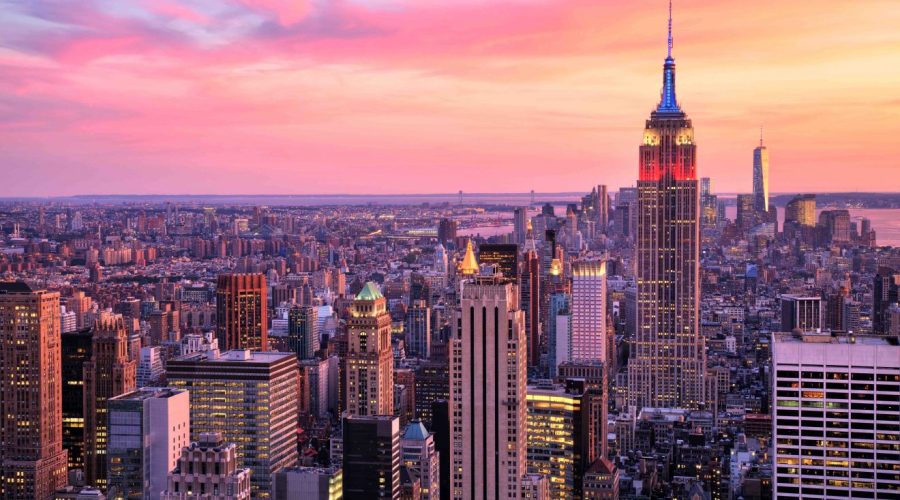You can’t hear about New York City without imagining the Empire State Building standing tall in the background. A trip to New York City isn’t complete unless you visit this iconic landmark! But did you know that one of the world’s most famous buildings has its own set of intriguing secrets? Today, we uncover little-known Empire State Building Facts just for you!
First, are you aware that the original blueprint of the Empire State Building is located in the Observatory Experience? That’s the name of a museum inside the Empire State Building. In the museum is a gallery of multiple hands-on exhibitions that highlight the unique significance and history of the different parts of the famous building.
John Jakob Raskob, a businessman who came up with the overall plan for the Empire State Building, reportedly had only one order for his architects. It was to build as high as they could without the building falling over. The builders and designers did not disappoint. The Empire State Building was finished ahead of schedule and under budget. Unfortunately, it came at a tragic cost: at least five workers were killed during construction.
On a more positive note, in the ’80s, a thrill-seeking duo made parachuting off the observation deck of the Empire State Building an item on their bucket list! In April 1986, British daredevils Alastair Boyd and Michael McCarthy hid parachutes beneath their coats and purchased tickets to the Empire State Building. They then jumped from the 86th story observation deck. The pair safely landed on 33rd Street, more than 1,000 feet below. Authorities immediately caught McCarthy. Boyd got in a cab and fled. However, he quickly turned himself in.
Like what you read? Learn more about this iconic skyscraper, check out our collection of 40 Empire State Building facts.
- 01Without its antenna, the Empire State Building stands 380 meters high.
- 02Including its antenna, the Empire State Building stands 443 meters high.
- 03The Empire State Building held the title of the World’s Tallest Skyscraper from 1931 to 1970, until construction was completed on the World Trade Center.
- 04Following the devastating events of 9/11, the Empire State Building became New York’s tallest skyscraper until 2012, when the incomplete One World Trade Center surpassed its height.
- 05The Empire State Building has a total of 102 floors.
The Empire State Building stands in Manhattan.
The skyscraper specifically stands in South Midtown, on the west side of Fifth Avenue, between 33rd Street to the south and 34th Street to the north. The building’s entrances also depend on whether tenants or visitors want to enter the building. Tenants use entrances leading to the Art Deco lobby at 350 Fifth Avenue. Visitors previously used entrances leading to the Fifth Avenue lobby, but from 2018 onward, use an entrance at 20 West 34th Street. The skyscraper also stands as one of 43 buildings in New York with its own ZIP code, 10118.
Other iconic buildings stand near the Empire State Building.
Macy’s Herald Square, the biggest department store in the USA, stands at Herald Square along Sixth Avenue and 34th Street. Koreatown is also nearby, along 32nd Street between Madison and Sixth Avenue. There’s also Penn Station and Madison Square Gardens, along Seventh Avenue between 32nd and 34th streets. 28th Street’s Flower District also stands nearby, between Sixth and Seventh Avenue.
Plans for the skyscraper experienced several revisions before construction began.
The original plan called for a building only 165 meters high, but the first revision changed that to 198 meters. The plan changed again, this time to 264 meters before another revision added five more floors and an observation deck at a height of 320 meters. The final revision in December 1929 added a final 129 meters to the building with a crown and antenna. Between all the various revisions, records point to 15 various blueprints before a final version was approved for construction.
Its design also accommodated specific building requirements.
The 1916 Zoning Resolution required buildings to not block surrounding sunlight and allow some of it to reach the streets below. This led to the Empire State Building’s design of having steadily narrower upper levels. The building first narrows at the 21st Floor, then again at the 25th, 30th, 72nd, 81st, and finally, the 85th Floor.
Other New York buildings also competed at the time to become the world’s tallest building.
The 1920s saw the construction of 40 Wall Street and the Chrysler Building, standing at 283 and 319 meters tall, respectively. In fact, the original owners of the Empire State Building, John Raskob, and Al Smith, openly wanted to build a skyscraper taller than the Chrysler Building.
Many of the revisions to the proposed designs for their skyscraper resulted from the owners wanting to build and own the tallest building in the world. In the end, though, they succeeded, with the Empire State Building holding that title for decades to come.

